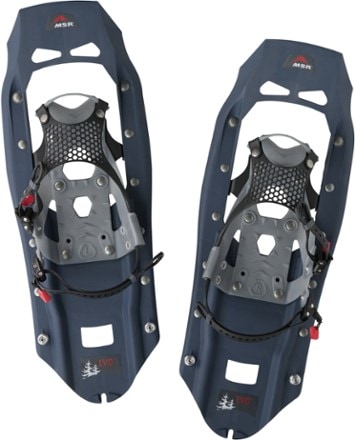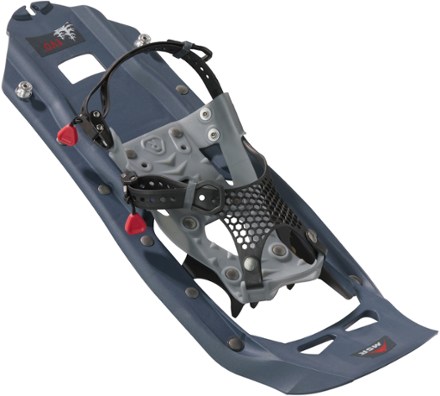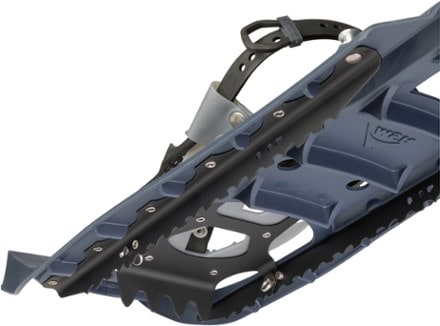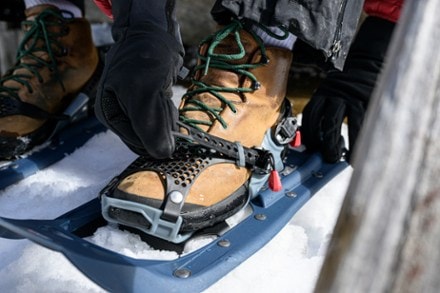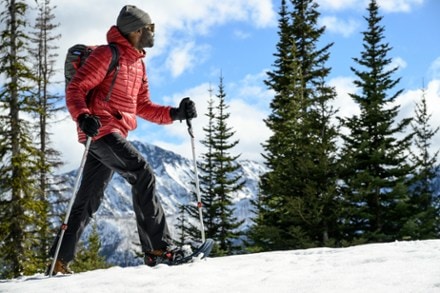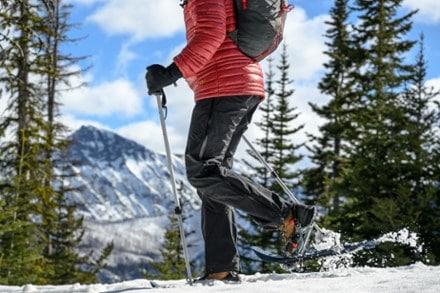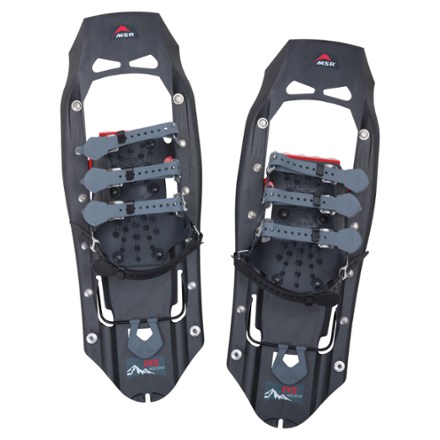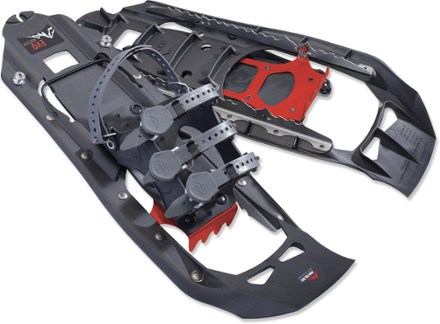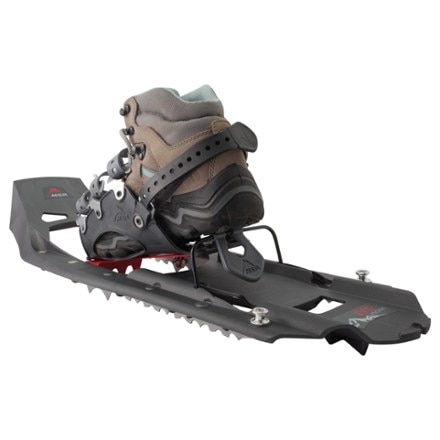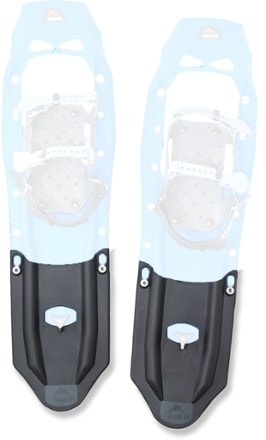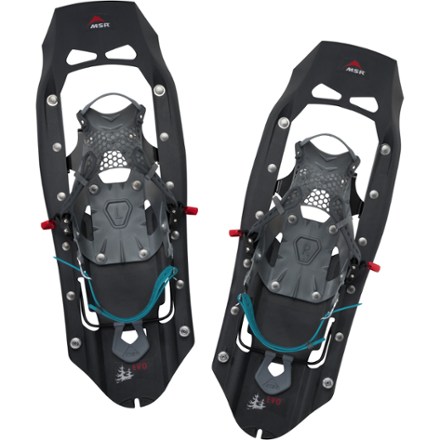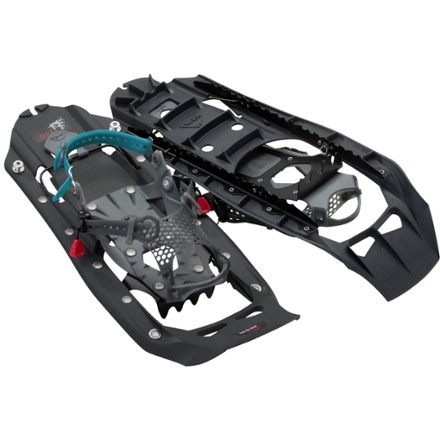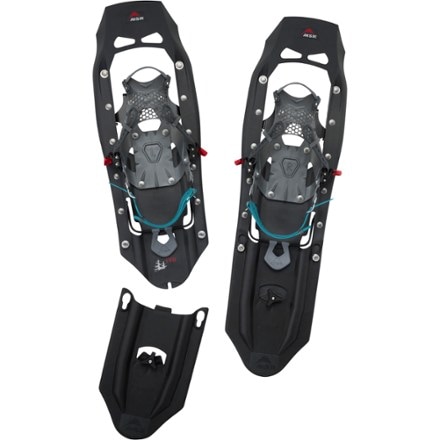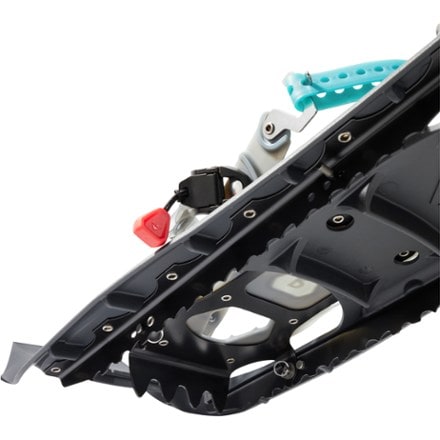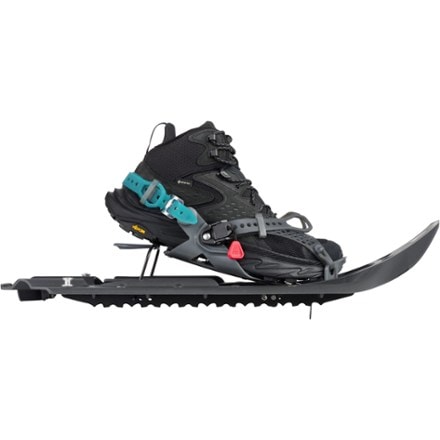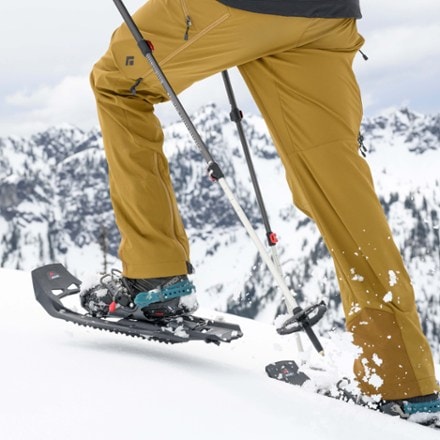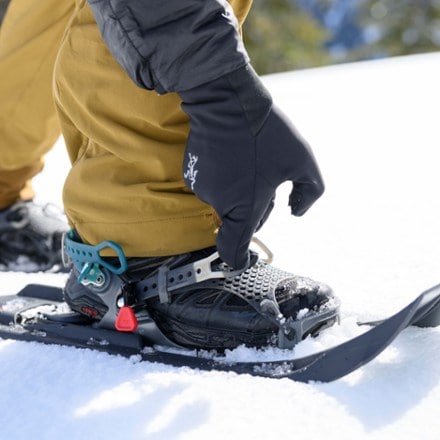MSR Evo
(4 products)- Snowsports (4)
- Snowshoeing (4)
- Rolling Terrain (2)
- Mountain Terrain (1)
- $50.00 to $99.99 (1)
- $100.00 to $199.99 (1)
- $200.00 to $499.99 (2)
- Made in USA (4)
- Top Rated (3)
- Toe Crampon (3)
- Side Traction (3)
- Heel Lift (2)
- Heel Crampon (1)
- Evo (4)
- Hubba (5)
- IsoPro (2)
- Lightning (6)
- PocketRocket (5)
- Revo (7)
- WhisperLite (2)
- WindBurner (6)
- 0.5 to 0.99 (1)
- 3 to 4.99 (3)
- 175 to 224 lbs (3)
- Rubber Strap (3)
- Snowshoeing (4)
- MSREvo Trail SnowshoesTop Rated$169.95(38)38 reviews with an average rating of 4.7 out of 5 stars
- MSREvo Ascent Snowshoes - Men'sTop Rated$259.95(94)94 reviews with an average rating of 4.6 out of 5 stars
- MSREvo Modular Snowshoe Flotation Tails - 6"Top Rated$54.95(30)30 reviews with an average rating of 4.6 out of 5 stars
- MSREvo Explore Snowshoes - Men's$229.95(0)0 reviews
Related Expert Advice articles
Where do you plan to snowshoe?
- Flat terrain: Less expensive, have a simple binding system, provide modest traction, no heel lift for climbing steep slopes.
- Rolling terrain: Moderate price and traction, have a sturdy and adjustable binding system, some include heel lift.
- Mountain terrain: Pricier, aggressive crampon system for traction, advanced binding system, heel lift in most styles.
Sizing snowshoes
The more weight (you and your gear), the more surface area required for flotation. Check that your maximum load fits within the snowshoe's rated capacity.
- Powder snow: Use bigger (longer) snowshoes.
- Compact, wet snow and packed trails: Smaller snowshoes work well.
- Steep (but not powdery) slopes and icy terrain: Easier to negotiate with smaller snowshoes.
Which snowshoe binding is right for you?
- Rotating (or floating): Reduce leg fatigue when climbing, shed snow well and good for climbing steep slopes.
- Fixed: Less efficient but allows a more natural walking movement on flat and hard-packed terrain.
Read full article: The 7 Best Snowshoes of 2025: Staff Picks
What capacity tent do you need?
- How many are in your group? Tents vary in size from 2- to 8-person.
- Assume a close fit for the number of people your tent is designed to accommodate. If you need more space for dogs and gear, size up.
Choose the seasonality
- 3-season tents are great shelters for most of the year. They have ample mesh for good airflow and can withstand basic downpours.
- 3+- season tents are a little sturdier, and with less mesh, and are warmer than their 3-season cousins.
- 4-season tents are engineered to handle high winds and other severe weather. This can make them stuffy in warm weather.
Decide on key features
- Peak height: Look for a taller peak height if you want to stand up in the tent.
- Floor length: Can you fully lie down if you’re tall? Will it fit your cot or air mattress?
- Doors: If multiple people are sleeping in the tent, you might want more than one door for more convenient access.
Do you need a water filter or water purifier?
- Filters: Physically remove protozoa (like Cryptosporidium and Giardia lamblia) and bacteria (such as E. coli, Salmonella, Campylobacter and Shigella)—the main water concerns if you’re traveling in the U.S. and Canada.
Purifiers: Go further by combating viruses such as hepatitis A, rotavirus and norovirus.
Types of water filters
Pump: Precise even from shallow water sources, replaceable internal element or cartridge. Can be bulky and a chore to use and clean in the field.
Gravity: Easy to use, filters large quantities of water, replaceable element. Needs a hang point, slower and harder to fill in shallow water sources.
Ultraviolet light: Easy, quick and no element to replace. Requires batteries, prefiltering for silty or cloudy water and multiple treatments for large quantities.
Bottle: Lightweight, quick, replaceable element, less pricey. Water quantity is limited by bottle size.
Squeeze: Easy, quick, smaller and less pricey, have replaceable elements, sometimes usable as both a gravity and straw-style filter. Water quantity is limited by reservoir size.
Straw: Easy, quick, lighter and less pricey. Water is only available when you're at a water source and not all models have replaceable elements.
Chemicals: Easy, inexpensive, ultralight backup method to purify water. Significant wait time before water is safe to drink and don’t taste great.
How to Choose a Backpacking Stove
Decide on the stove type you want
Backpacking stoves are categorized by the type of fuel they use and how the fuel is stored.
Canister stoves use canisters of isobutane or propane. They’re easy to use and low maintenance.
Integrated canister systems pair a canister with a burner and a built-in pot.
Liquid fuel stoves connect to refillable fuel bottles. They’re versatile because they burn many types of fuels like white gas, kerosene and unleaded auto fuel.
Alternative-fuel stoves run on fuel pellets, wood or other fuel.
The pros and cons of each type
Canister stoves. Pros: easy to use. Low maintenance. Boils quickly. Cons: flame can weaken in the cold.
Integrated canister systems. Pros: boil water extremely quickly. Cons: prone to tipping.
Liquid fuel stoves. Pros: work well in cold weather. Boil water quickly, even in cold weather. Cons: require priming and occasional maintenance.
Wood-Burning Stoves. Pros: often simple, lightweight. Cons: require finding dry wood. Fire bans may limit use.
Denatured Alcohol Stoves. Pros: simple, quiet, use cheap alcohol. Cons: slow to boil.
Select the right specs and features
Consider a stove’s weight, average time to boil one liter of water and whether it features a push-button spark igniter (found on some canister-fuel stoves).
What capacity tent do you need?
- How many are in your group? Backpacking tent models usually hold 1 to 5 people.
- There’s no industry standard for what each size means, so check product specs.
- Assume a close fit for the number of people your tent is designed to accommodate, especially with ultralight models. If you need more elbow room, consider the next size up.
Decide whether you need all-year protection
- Many backpackers, especially beginners, choose a 3-season tent for great all-around protection.
- 3+- season tents are a little sturdier and warmer than their 3-season cousin, and with less mesh.
- 4-season tents are engineered to handle high winds and other severe weather. This can make them stuffy in warm weather.
- Consider alternative shelters like hammock tents, bug shelters or bivy sacks depending on your preferences and the conditions you may typically encounter on backpacking trips.
Tent weight
Backpacking tents are a tradeoff between weight and comfort. Pay attention to the difference between packaged weight (every part included) and minimum trail weight (the weight of just the tent, rain fly and poles).
Think about livability
- Peak area: How tall is the tent?
- Floor area: How much square footage is inside?

